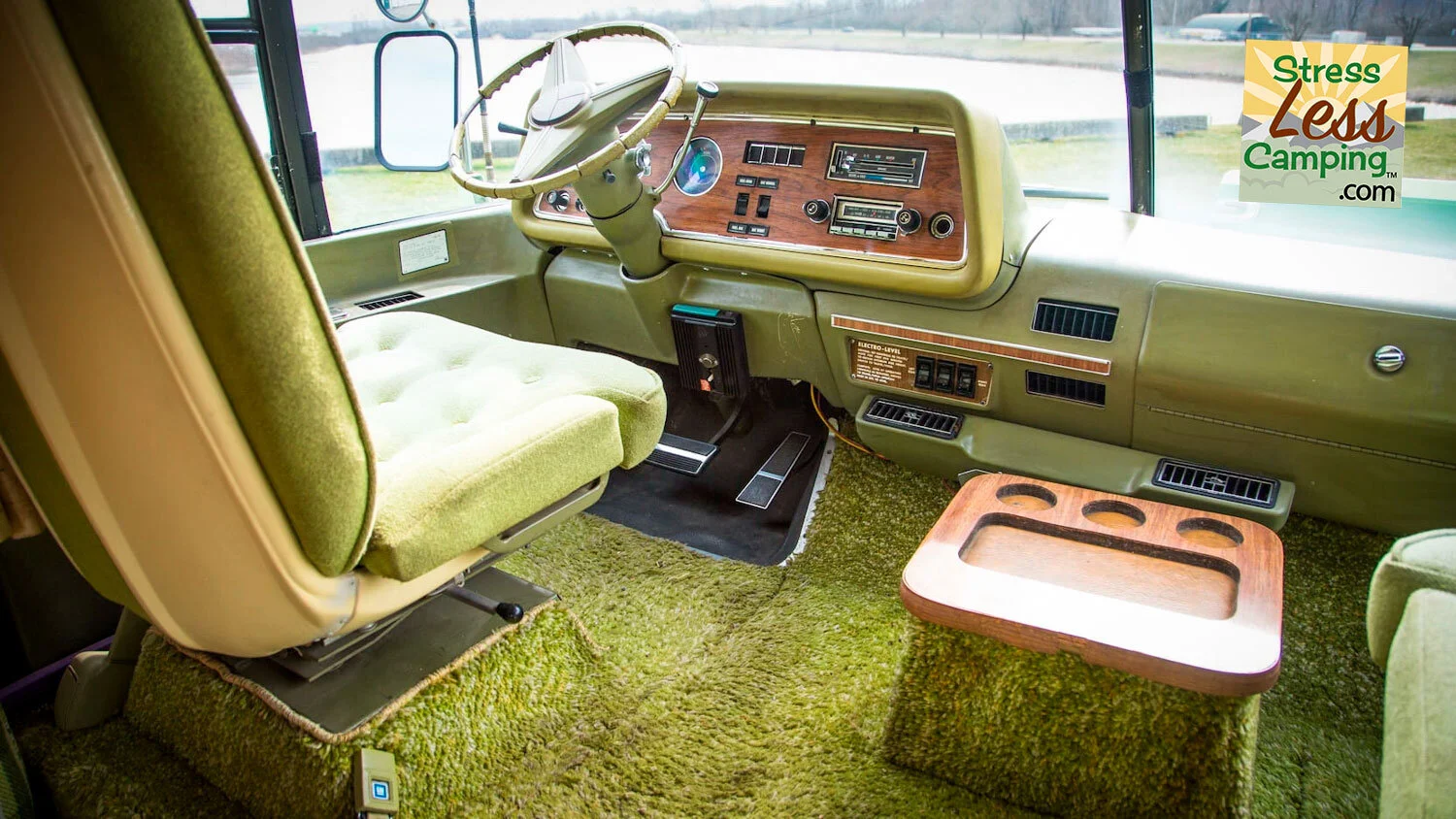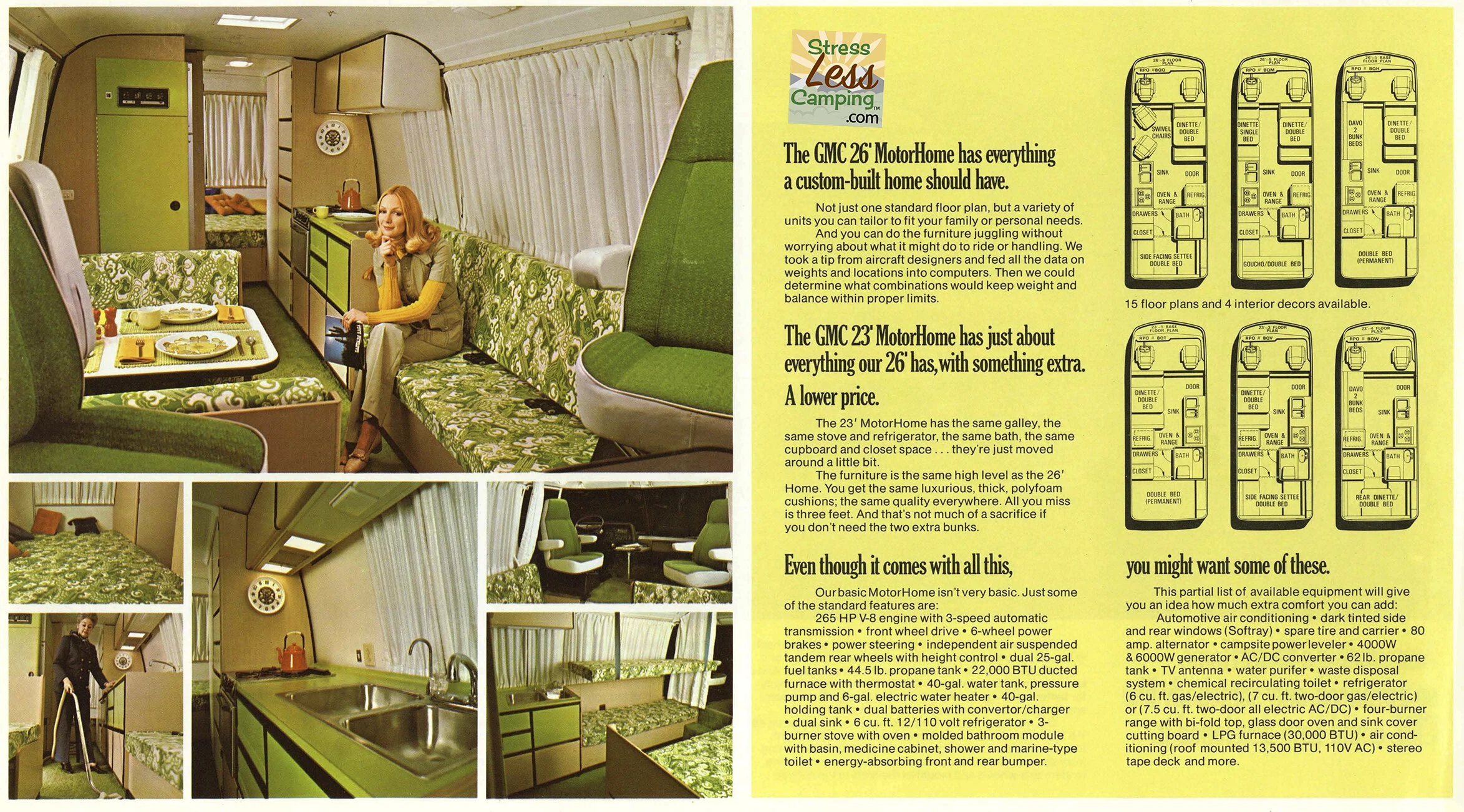An iconic motorhome even decades later
The GMC motorhome - still an icon
In the 1960s motorized RVs, or motorhomes, really started to sell well thanks to Winnebago who developed new construction techniques that really made RVs affordable. Lots and lots of people bought lots and lots of RVs because they could afford to. And most of those RVs were on Ford or Dodge chassis.
In fact, as the popularity of motorhomes gained momentum, they all had one thing in common - Dodge and, to a lesser extent, Ford build a commercial chassis and shipped it off to a company who then used techniques to build a motorhome on that chassis that probably wouldn’t last anywhere as long as the chassis would.
Furthermore these chassis were bulky and unsophisticated and designed for trucks, not passenger vehicles. Once a boxy motorhome body was placed on top of the chassis it handled poorly and didn’t take advantage of the space it used in the world. Furthermore the construction of these bodies was such that leaks were inevitable and those leaks would be disastrous to the longevity of the vehicle.
Enter the world’s largest auto manufacturer who saw motorhome sales climbing and didn’t really have much of the motorhome chassis market, so they took a different approach.
The driver cockpit of the GMC Motorhome was raised and afforded an incredible view thanks to a huge windshield.
In the 1960s and ‘70s General Motors owned almost half the American vehicle market with leading entries into just about every category you could think of. But they weren’t really a part of the motorhome market so they took a very unique approach. Instead of just building a chassis, General Motors built an entire motorhome.
Beginning in 1973 the GMC Motorhome, as it was called, was introduced to the market and was absolutely one of the most groundbreaking designs ever - in fact it still is class-leading in many ways to this day.
Instead of being a truck chassis with frame rails and much of the driveline stretched out under the floor of the coach, General Motors called used the “Unified Power Package” which could be found in the Oldsmobile Toronado (and Cadillac Eldorado). This meant that the big 455 cubic inch Oldsmobile V8 sat up front with a three-speed automatic transmission sitting alongside the engine driven by a chain, specifically a Morse chain, ultimately driving the front wheels.
The advantage of front wheel drive in passenger cars meant a flat floor and good winter traction but in a motorhome it allowed the company to lower the entire vehicle height significantly compared with contemporary traditional motorhomes. It gave the entire area rear of the driver cockpit up to use for motorhome furnishings.
In fact the floor of the GMC Motorhome is just 14” off the ground.
Furthermore, while most motorhomes were designed by a few engineers the General Motors Motorhome had the benefit of GM’s world-leading engineering staff so the body was built of fiberglass stretched over an aluminum frame. Water leaks and cheap plywood construction gave way to a vehicle that would last as long as any car of the day and absolutely was class-leading in both weight savings and construction quality.
Furthermore GM used suspension technology that allowed the GMC Motorhome to self-level on the road and manually when you got to camp. Instead of a four rear wheels on a single axle, the GMC Motorhome feature four independent rear wheels with a common air bladder suspension for both a smoother ride and to facilitate leveling the machine.
Without a lot of interior design experience in motorhomes, GM turned to House & Garden Magazine so interiors were as state-of-the-art as the engineering, featuring things like orange or green plaid, plush shag carpeting and other touches that screamed 1970s.
Two sizes fit all
The GMC Motorhome was available in 23’ and 26’ lengths in 15 different floor plans along with a bare model that was then transformed by outside companies into completed motorhomes or commercial vehicles.
Part of this outfitting was facilitated by a huge rear wall that could be removed, making for easy fitting of interior components.
With state-of-the-art engineering and interiors, what happened?
Motorhome sales in general took a steep dive in 1973, the year these came on the market, thanks to the Arab Oil Embargo. Not a lot of people were seeking out a large, pricey vehicle that got terrible mileage, even if it was among the better mileage figures in the industry.
Secondly, these were more money than a Cadillac of the day so they were pricey. One of the reasons Winnebago’s sales took off in the 1960s was that their motorhomes were about the price of the average car.
In a five year run from 1973-78 GMC build just under 13,000 units in total. By the end of the run GM could make much more money building trucks that really sold well in the same space. Plus, the Universal Power Package engine system was getting ready to get significantly downsized for the 1979 Oldsmobile Toronado, Cadillac Eldorado and new Buick Riviera and none of those drivelines was well suited to pull a motorhome around.
But, funny thing, building a motorhome using automotive methods and engineering means that that motorhome will likely outlast everything else on the market. The fact that the only real structural element made of wood in a GMC Motorhome is the floor means these things have passed the test of time.
Collectability today
Today GMC Motorhomes are popular collectible vehicles. There are clubs and Facebook Groups dedicated to preserving and maintaining them with some collectors doing their best to keep them as original as possible, shag carpeting and all, and others modernizing the drivetrain including replacing the Oldsmobile V8 with a modern diesel engine.
There are a number of specialists around the US who practice their craft specifically on GMC Motorhomes and they still stand out at an RV park with many people saying they still look more modern than anything in a dealer’s showroom today.
The GMC Motorhomes were available with all sorts of luxury features at the time including central vacuums, Onan generators, air conditioning, macerator black tank systems and more. As with any collectible vehicle prices run the gamut but parts, including the giant expansive windshield, are still available. For a price.
A GMC Motorhome in decent shape can command from $10,000-20,000 and some of the more nicely restored versions can command over $100,000. While that might seem pricey, considering that these half-century-old vehicles are still better engineered than most modern coaches, it says something about the GM that brought these to market.
We would like to thank JTVairs for both sharing our love of Corvairs and GMC Motorhomes as well as for some of the images used in this article.
The GMC Motorhome International collectors’ club.














